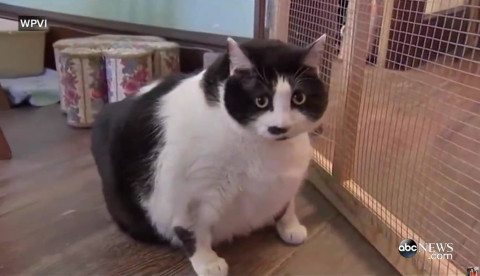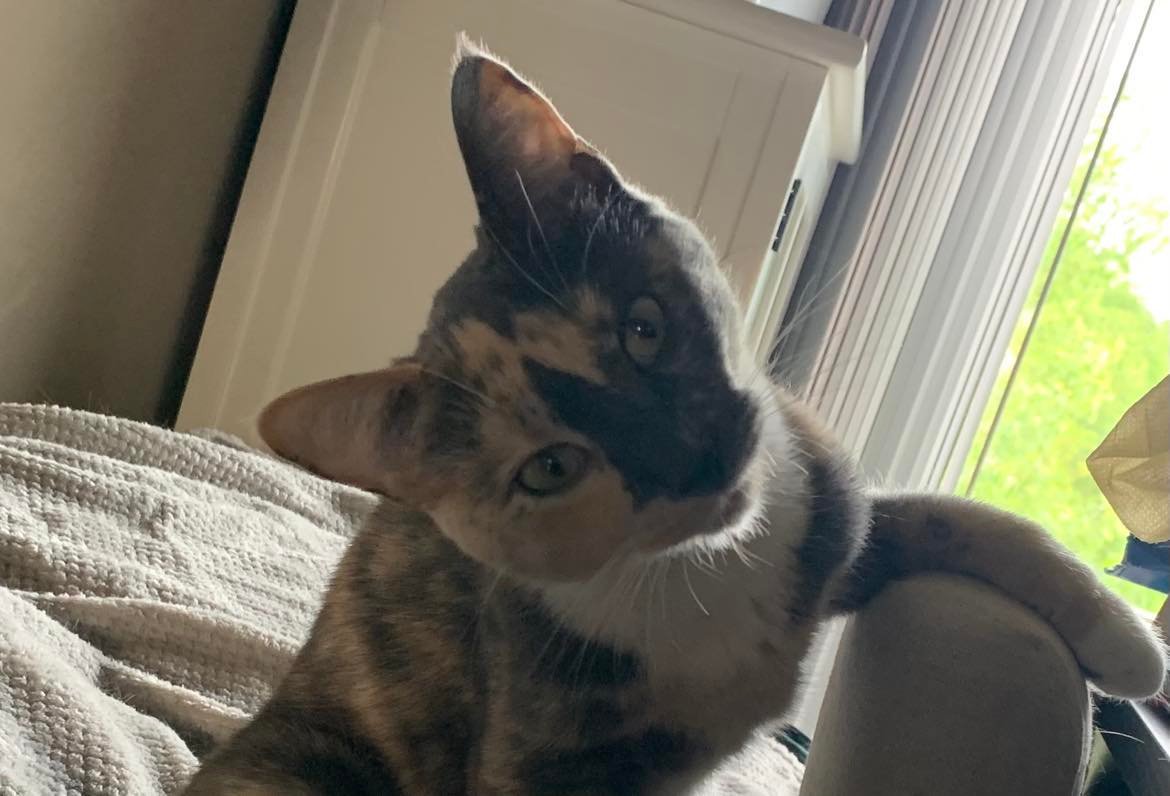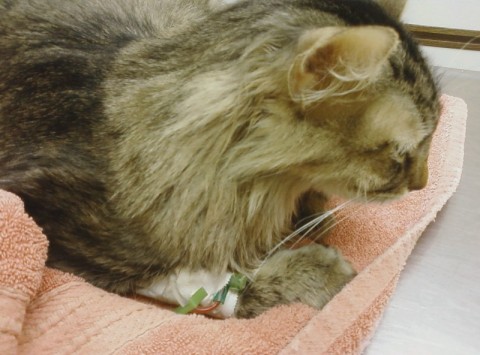Sprinkles, a 33-pound domestic cat in New Jersey, had all the expected problems associated with obesity. She had trouble moving. She was at high risk for diabetes, and other health problems. She also had urine burns and an infection on her butt because she couldn’t clean herself. Sprinkles is a prime example of the problems you risk when you free feed cats.

When Sprinkles was taken to S.O.S. Sea Isle City Cats, her caretaker couldn’t figure out how she’d gotten so heavy, except that possibly her former owners had allowed her to free feed, or that she was fed a lot of table scraps. Perhaps both. While it’s true that many cats are able to only eat what they need, there are also many cats that can’t. Those cats will eat, and eat, and eat, when the food is available for them to do so.
What does it mean to free feed cats?
Free feeding means that you leave a bowl (or bowls) of food out for your cats all the time. It’s usually dry food, and it gives your cat nonstop access to food, which can lead to overeating. Out of our four cats, we have one who just eats what she needs, and no more. She’s never been overweight. However, the other three ate all the time when we free fed them, and they were all overweight at one point. This is one of the primary reasons it’s not good to free feed cats.
Reason number two it’s not good to free feed cats
Another reason it’s a bad idea to free feed cats is illness, especially if you have more than one cat. Oftentimes, the first visible sign that your cat isn’t feeling well is that she stops eating. If you’re feeding on a schedule, it’s easier to see when your cat isn’t eating, and even which one it is. When you free feed cats, it might be several days before you notice. By that point, she could be really sick.
As long as you take good care of your cats, and pay good attention to them, you might notice other signs of illness before you notice a lack of appetite. Thus, obesity is a bigger threat when you free feed cats.
As for Sprinkles, she’s doing better. She’s lost about three pounds, and is on pace with S.O.S.’s goal of one pound per month. The biggest risk now, with helping Sprinkles lose weight, is fatty liver disease. That’s why they’re keeping her weight loss down to a pound a month; her liver needs time to process the fat that she’s losing.
Watch Sprinkles’ story below:



